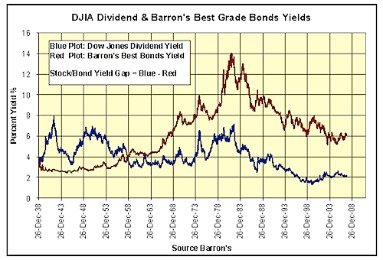Contents

They employ numerous techniques and sources both to find the best https://en.forexbrokerslist.site/ and to profit from them. This style of trading, requires a lot of discipline in terms of position sizing and stop loss, to be successful as a day trader. Stock or asset selection, is very crucial to be successful in day-trading. Day traders are types of traders that hold on to assets for few hours.
https://topforexnews.org/ traders are known for mixing different styles of analyses into their trading plan. They often combine classical indicators, such as MACD and RSI, and price action, such as candlestick patterns, for determining trends, and support & resistance. Sometimes they also add patterns, like chart & wave patterns, for a better understanding of the overall chart and price structure. Stock market swing traders are eligible for up to two times leverage when they buy on the margin.
Swing trading is a style of trading that attempts to capture short- to medium-term gains in a stock over a period of a few days to several weeks. Swing traders primarily use technical analysis to look for trading opportunities. Cory is an expert on stock, forex and futures price action trading strategies. Since day trades have a tighter stop-loss than swing trades, position sizes can be slightly higher. Whether you want to be a successful day trader or swing trader, you have to define strict risk management rules and use stop-loss levels in all of your trades. Day traders open and close their trades during the same trading day, which means that overnight risk is completely eliminated.
Now that you understand the benefits of swing trading vs day trading, you may have an opinion on which trading style is best. Essentially, swing traders take advantage of “swings” in the market’s momentum. Swing trading in stocks involves buying and selling stocks over a period of days to weeks. Unlike a 9-5 job, day traders have the freedom to work whenever they want, and make as many trades as they are comfortable with. Day traders take advantage of intraday price and volume momentum to open and close trades in the same day.
Now, let’s look at what is possible in real life and consider the profitability of both styles wholistically. To start with, you need to take into account the number of trades, so it’s better to consider the profitability per the number of trades taken. Where day trading gets riskier is when it comes to your money management principles covered under #4 above. Because you have more leverage there is a greater chance you can get yourself in trouble.

Swing traders primarily use technical analysis, due to the short-term nature of the trades. That said, fundamental analysis can be used to enhance the analysis. For example, if a swing trader sees a bullish setup in a stock, they may want to verify that the fundamentals of the asset look favorable or are improving also. Another important difference between day trading and swing trading is the required minimum capital to start trading. While most retail brokers don’t have a minimum deposit requirement, this doesn’t mean that you should start swing trading with the same amount of capital as with day trading. This balance between buyers and sellers oftentimes does not provide the best swing trading opportunities, so only thing swing traders can do is wait for a breakout of the balance.
Capital requirements
But the type of risk differs based on the type of strategy you choose. By trading within such short-time frames, day traders by definition avoid the market risk that results from long-term shifts in the market. They manage these risks by using a disciplined plan and placing boundaries for themselves on when to buy and sell. Similarly, since day traders make smaller trades each day on smaller price movements, they may face less risk day to day than swing traders are subject to.
Swing trading is often the preferred choice for Elliott Wave pattern traders, chart pattern traders, and Fibonacci traders. This article will help you decide on the best trading style for you. First of all, it will explain all of the three styles in more depth, then it will identify the main differences between them and, lastly, it will compare them and provide an overall conclusion. The information contained on this website is solely for educational purposes, and does not constitute investment advice. You must review and agree to our Disclaimers and Terms and Conditions before using this site. Are you attentive to detail or more of a “big picture” type of person?
So as same with a swing trading lets have a look at some common day trading problems. Day trading solves quite many swing trading problems such as long term market exposure or ability to predict the future weeks or month in advance. Those traders who do not have time to monitor charts often due to work and would enter trade like this would be sitting at around 2R profit, which is great. Looking at 6E chart above (the equivalent of spot FX EUR/USD), you might get into the swing long position based on this resistance turned support on a daily timeframe. In a trending environment, swing trading might be a piece of cake, but once markets turn into the accumulation/distribution phase things can get much more complicated.
Day Trading vs. Swing Trading: What’s the Difference?
Developing a winning trading system begins with choosing the trading style that’s right for you. Value investing vs growth investing, many times the verdict will come down to personal preference and industry knowledge. However, that doesn’t mean each strategy comes without its own benefits and drawbacks. Actions, which more narrowly defines day trading activity in relation to a specific regulatory context. However, you will be limited in how much you can trade since you’ll need to avoid triggering the Pattern Day Trader rule.
https://forex-trend.net/ traders will still benefit from compounding, but not as much as day traders since they don’t redeploy their capital as frequently. Swing trading and day trading are similar methods, but there are several key differences. Both trading styles can net you gains, but they depend on the amount of capital available, how much time you have, your trading psychology, and the market you’re trading. As swing trade positions blossom over a longer period of time, there is greater potential for higher gains compared to day trading. The best news about being a day trader is that you are equipped to handle fast paced trading with lots of volatility. When getting started with day trading and swing trading, you need to tick the basics first.
- A swing trader relies heavily on technical analysis to identify moments to enter and exit a position.
- Day traders use more sophisticatedtechnical indicators than swing traders and entry/exit points must be far more precise.
- Swing traders primarily use technical analysis, due to the short-term nature of the trades.
- No part of this material may be copied, photocopied or duplicated in any form by any means or redistributed without the prior written consent of StoneX Group Inc.
Day traders may even open and close multiple positions at the same time. Still, many professional stock and crypto traders prefer a swing trading style instead. Continue reading, as we walk through the benefits of swing trading vs day trading to help you decide the best trading style for YOU. Fast and frequent trades can be more stressful and prone to error than slower and more calculated trades. Adding to the intensity of this pace, a day trader may also find herself glued to a desk, staring at a screen, and constantly scanning charts in search of the next trading opportunity.
Day Trading VS Swing Trading
That’s why it is often important to understand what separates the two. If nothing else, it can strengthen your fundamental knowledge of what the two trading strategies represent. On the other hand, managing risk as daytrader is hard and even a small mistake can cost you a lot.
One requires at least a few hours a week while the other requires at least a few hours a day. Day trading, as the name suggests, involves making dozens of trades in a single day, based on technical analysis and sophisticated charting systems. Day trading seeks to scalp small profits multiple times a day, not holding any trades overnight. Swing traders do not close their positions on a daily basis and instead may hold onto them for weeks or months, or even longer.

Swing traders hold their positions based on the market movement to earn a bigger profit. Despite their similarities, swing trading is clearly distinguishable from day trading. While day trading happens over the market day—with few day traders keeping any positions open overnight—swing trades tend to take days, and sometimes weeks to execute. In terms of day trading specifically, you’ll need to familiarize yourself with proper technical analysis techniques. You should know which technical indicator setup works best under specific timeframes.
Tradingriot.com
As the name suggests, day trading involves making dozens of trades in a single day. Day traders rely heavily on technical analysis and sophisticated charting systems to detect trading patterns and identify strategic enter and exit opportunities. Swing traders do not suffer under the burden of having to monitor their trades constantly. Since they hold their positions somewhere between a few days to weeks, they don’t have to worry about short-term market volatility.
Once the trader is confident in their position, they will hold it until the prescribed end of the swing. When comparing day trading vs swing trading, a person has to decide what type of trader they want to be. If a person is ready to put their efforts and focus on the market, they can become a day trader. Due to the large number of trades carried out by the day trader, they can earn higher profits.
